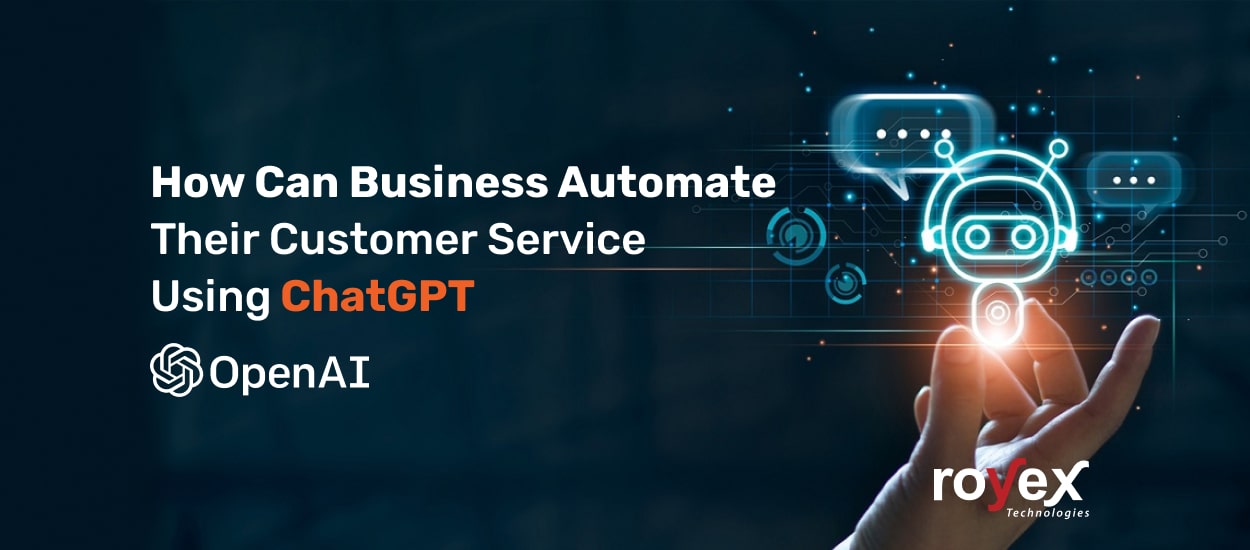
How Can Businesses Automate Their Customer Service Using ChatGPT
ChatGPT can be utilized to automate various processes and workflows within small businesses. The model can be trained on specific tasks or information that pertain to the business, such as frequently asked questions or typical customer interactions. This way, once trained, the model can be integrated into a chatbot or other software to handle these tasks automatically. It can also be used to generate human-like responses, such as emails and chat conversations, which can assist in automating the customer service process. However, it's crucial to note that setting up and maintaining this system can be intricate and may require considerable time and resources.
ChatGPT can be used to automate customer service by providing fast and accurate responses to customer inquiries. The language model can be trained on a large dataset of customer service-related conversations, including transcripts of previous customer service interactions, FAQs, and other relevant information. The trained model can then be integrated into a chatbot platform, such as Dialogflow, Botkit or Botpress, which can be designed to understand the customer's questions and provide appropriate responses.
One of the advantages of using ChatGPT for customer service is its ability to understand and respond to natural language queries, which allows for more efficient and effective communication with customers. ChatGPT can also be integrated with other customer services tools such as CRM, Knowledge base, and ticketing systems to provide more personalized and efficient service.
Businesses can save time and resources by automating customer service using ChatGPT while providing fast and accurate responses to customer inquiries. This can lead to improved customer satisfaction, increased customer loyalty, and ultimately, increased revenue for the business.
How do Businesses Automate customer service using ChatGPT?
Businesses can automate their customer service using ChatGPT by implementing a chatbot that utilizes the language model. Here are a few steps on how to do that:
Train the ChatGPT model: Start by training the ChatGPT model on a large dataset of customer service-related conversations. This can include transcripts of previous customer service interactions, FAQs, and other relevant information.
Integrate the model into a chatbot: Once the model is trained, it can be integrated into a chatbot platform, such as Dialogflow, Botkit, or Botpress. The chatbot can be designed to understand the customer's questions and provide appropriate responses.
Test and fine-tune the chatbot: Before deploying the chatbot to handle customer service interactions, it should be thoroughly tested and fine-tuned. This can include testing the chatbot's understanding of different customer queries and adjusting the responses as needed.
Monitor and improve the chatbot: After it is deployed, it should be monitored to ensure that it provides accurate and helpful responses to customer inquiries. The model should be fine-tuned and updated regularly to improve its performance over time.
Integrate with other tools: The chatbot can be integrated with other customer services tools such as CRM, Knowledge base, and ticketing systems to provide more personalized and efficient service.
Provide fallback options: The chatbot can be designed to provide fallback options if it doesn't understand the customer's question or if the customer is not satisfied with the chatbot's response. These options can include transferring the customer to a human agent, providing contact information, or directing the customer to a FAQ page.
Businesses can save time and resources by automating customer service using ChatGPT while providing fast and accurate responses to customer inquiries.
How to automate customer service using ChatGPT
There are several ways to automate customer service using ChatGPT. One approach is to use a conversational AI platform, such as OpenAI's GPT-3, to generate responses to common customer inquiries. These responses can be pre-written by your customer service team or generated on the fly using the conversational AI model.
Another approach is to use ChatGPT to train a custom language model that can be integrated into your customer service chatbot or virtual assistant. This would allow the chatbot to understand and respond to customer inquiries in a more natural way by using the same kind of language that your customers use.
It's important to note that Automated customer service using ChatGPT will not fully replace human customer service representatives but it could help handle repetitive and simple tasks so that human representatives could focus on more complex issues.
This is explained in a step-by-step process:
Identify Automatable Processes: Begin by determining which tasks or customer interactions are repetitive and can be handled by a machine.
Collect Data and Create Training Dataset: Gather a large amount of relevant data, such as customer interactions, frequently asked questions, and more, to create a training dataset. The quality and quantity of data used to train the model greatly impacts its accuracy and performance.
Train the Model: Utilize the collected data to train a ChatGPT model on the specific tasks or information relevant to the business. Leverage OpenAI’s GPT-3 fine-tuning to tailor the model to the specific use case.
Integrate into Chatbot or Application: Use a chatbot framework or platform to integrate the trained model into a chatbot or other application, allowing the model to handle automated tasks or interactions.
Test and Refine: Test the chatbot or application with real-world data and make adjustments as needed to improve performance.
Deploy and Monitor: Deploy the chatbot or application in production and regularly monitor its performance to ensure it is functioning as intended. Continuously improve the model by fine-tuning it with new data over time.
It's crucial to consider the type of interactions or tasks that are suitable for automation. Tasks that involve simple, structured data or follow a predictable pattern are often ideal for automation. Additionally, tasks requiring a high accuracy or speed may also be suitable for automation.
One way to identify processes that can be automated is to analyze your business's workflows and data to identify inefficiencies or bottlenecks. You can also survey or interview employees to find out which tasks they find repetitive, tedious or time-consuming.
Another approach is to focus on areas of your business with the most customer interactions, such as customer service, sales, or marketing. Automating these processes can improve customer satisfaction and reduce the workload for employees.
It's important to note that not all processes can or should be automated, and it's crucial to consider the potential impact of automation on the overall business. Finding the balance between automation and the human touch is essential. Automation can help improve efficiency and customer service while allowing human employees to handle more complex or nuanced tasks.
How can Royex Technologies help?
Royex Technologies can help companies integrate AI-based solutions like ChatGPT into their business operations. We can facilitate adding your website's custom content to ChatGPT and training chatGPT to customize its response. We can also develop ChatGPT APIs to easily integrate the power of GPT into their applications and create advanced language-based features, such as natural language understanding, text generation, and chatbot capabilities.
Contact us to learn more about our ChatGPT services. Contact us via email at info@royex.net or call us at +971566027916 with your requirements.





